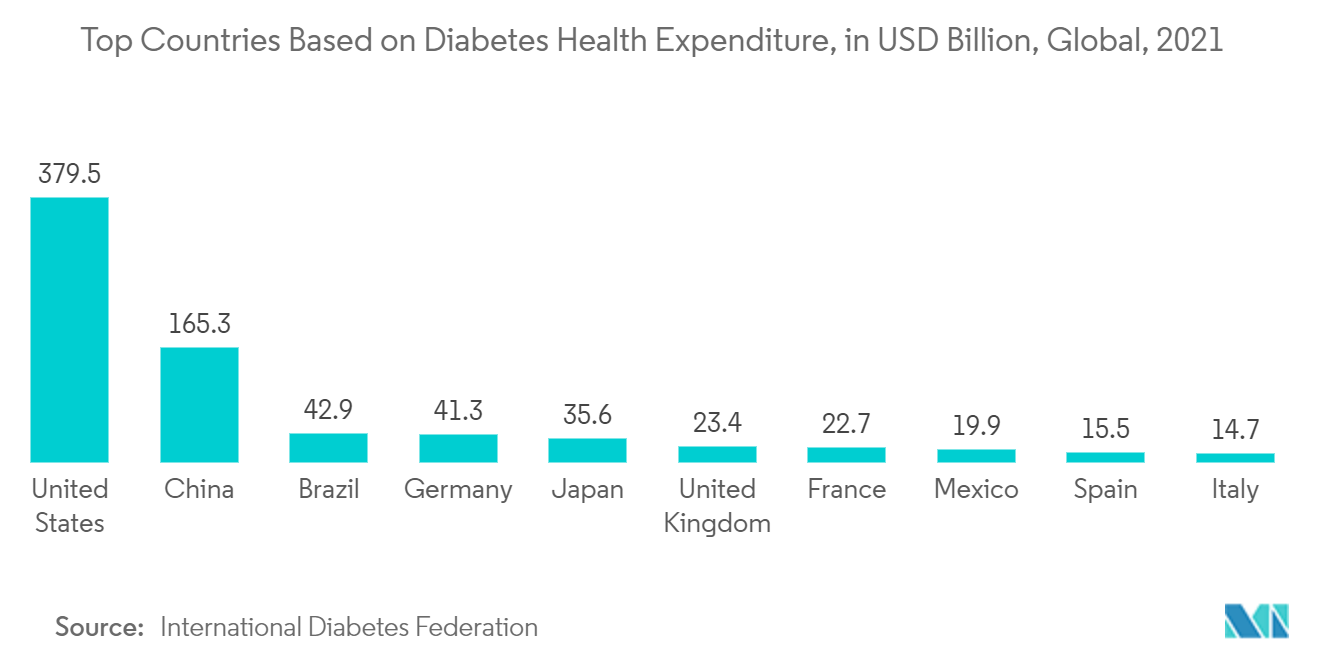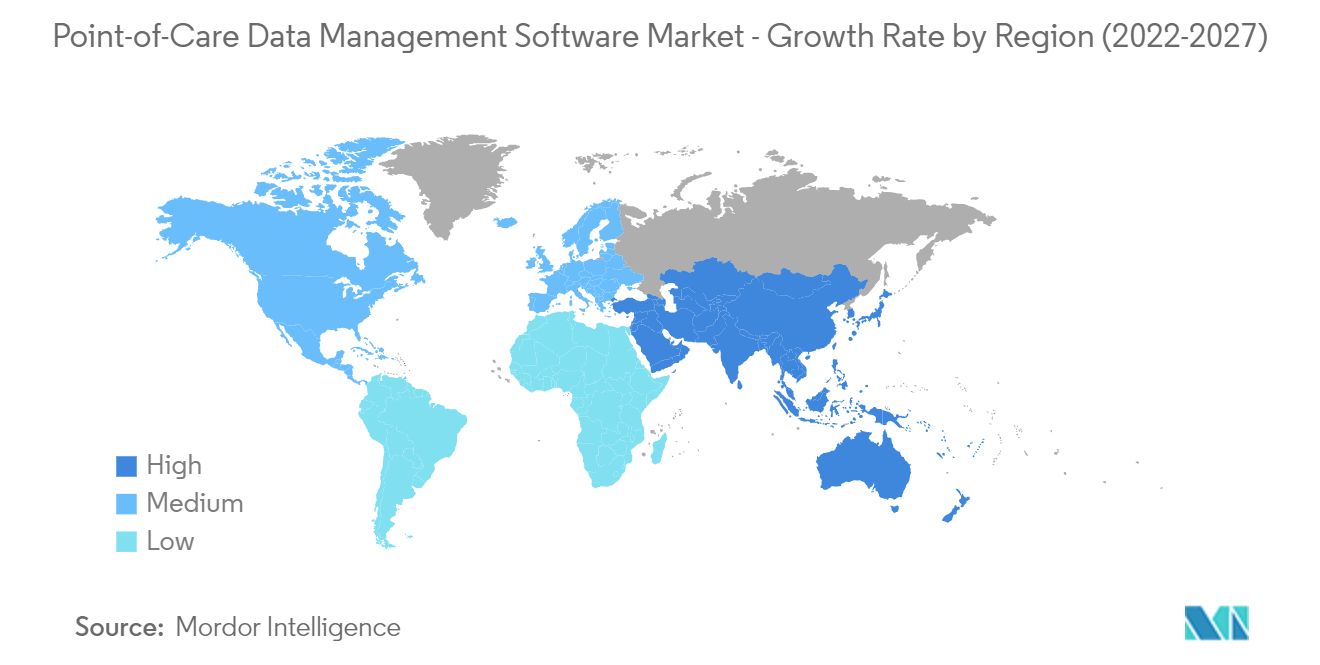Market Trends of Point-of-Care Data Management Software Industry
This section covers the major market trends shaping the Point-of-Care Data Management Software Market according to our research experts:
Hospitals/Critical Care Units Segment is Expected to Hold a Significant market Share
- The point-of-care testing (POCT) and electronic medical records system usage are rising in hospitals, where the importance of real-time electronic reporting of results is increasing. POCT data management systems are evolving to meet the marketplace's changing needs in supporting such a model. Across the hospitals, either from campus to campus or from one state/province to another, the web-based connectivity data management platform unlocks primary efficiency in point-of-care testing program management.
- The most critical aspect of POC (point-of-care) technology is its presence at the bedside. POC technologies facilitate and improve interactions between patients and their nurses, doctors, and surgeons, leading to better healthcare outcomes. Bedside glucose testing is the most widespread and occupies the most massive volume in the POC market. These were the first devices developed and involved hundreds of devices and thousands of operators.
- Further, a wall-mounted POC terminal in every room/treatment area or workstation on wheels has the potential to create significant time and cost savings in any hospital. Various studies concluded that nurses spend 25-50% of their shifts on documentation done in the traditional manner, which is on a physical chart with a pencil and paper. This means that nurses are regularly involved in accurate retrieval, production, modification, and critical patient data storage.
- Further, clinicians in intensive care units (ICU)/critical care units often work with critically ill patients in limited space and must make quick decisions at that point of care. Thus, critical care units have increasingly used POCT as a routine element of patient management, notably for blood gas analysis. The primary objective of the blood gas analyzer (BGA) is to deliver accurate measures of the blood gas levels (such as pH, pO2, and pCO2); however, modern analyzers can currently measure additional parameters in the same blood sample, such as the hemoglobin or electrolyte concentrations (includes sodium, potassium, chloride, and ionized calcium).
- The development of SmartICU at a hospital in Spain, in partnership with NTT DATA (an NTT DATAzGroup), is teaming its doctors and technologists with NTT DATA's data scientists to get better clinical results. At the outset of a one-year journey of developing the SmartICU solution with the hospital, the team identified data management and reporting as the primary obstacle.
- Data sources at the critical units go far beyond high-level device readings when one considers them unstructured, such as the nurse's hourly measurements manually. The teams spent a certain amount of time on data discovery, integration, reporting dashboard designing, and customizing. With this foundation, the hospital and NTT DATA teams have focused on the most value-adding analytic scenarios to layer on top.

North America is Expected to Hold a Significant Market Share
- Point-of-care testing (POCT) has been used in the North American region for several decades to diagnose and monitor acute and chronic medical conditions. The growing availability of rapid tests for diagnosing infectious diseases, such as HIV, TB, or malaria, that primarily enable physicians and patients to visualize the results from a smartphone and make appropriate clinical decisions may transform the market over the next few years. The point-of-care diagnostics market is also driven by the latest innovations in the diagnostics industry to provide an expedited diagnosis for quick clinical decision-making to support treatment regimens.
- According to the Centers for Disease Control and Prevention, chronic lower respiratory diseases, including COPD and asthma, are the fourth-leading causes of mortality in the United States. They are responsible for more than 160,000 deaths a year. It is expected that 1 in 5 COPD patients will be readmitted within 30 days in the United States.
- There is a preference for POC adoption by governments. POC testing reduces the strain on hospital resources, as well as ER wait times and visits. The majority of POC tests produced are designed for detecting infectious diseases. For instance, the Point of Care Technologies Research Network established by the United States National Institute of Biomedical Imaging and Bioengineering accelerates POC diagnostics or testing product development. Favorable regulations, such as the Clinical Laboratory Improvement Amendments (CLIA) guidelines, promote POC testing over other forms.
- Presently, US POC testing caches comprise chemistry/electrolytes, pregnancy, hemoglobin, cardiac biomarkers, hematology, fecal occult blood, drugs of abuse, liver function, blood gases, and limited infectious diseases. Owing to the deficiencies with existing POC tests for cardiac biomarkers, MEDITECH's Expanse Point of Care software, the company's latest web-based mobile technology for nurses and therapists to provide the best and most efficient patient-facing care, has been implemented at King's Daughters Medical Center, aiming to eliminate infectious diseases. Depending on geographic location and potential infectious diseases, POC resources can be customized for pandemics, complex emergencies, or disasters.
- As the healthcare community scrambles for accurate, timely, and virtual strategies to improve patient care, especially amid the COVID -19 pandemic, Evoke360 not only enhances the quality of care and patient outcomes but also impacts quality and risk adjustment scores that increase profit margins and give provider organizations a competitive edge. In June 2020, DataLink Software (DataLink) pointed to the key advantages of Evoke360 and its Provider Relations Management (PRM) module, enabling providers to transition from fee-for-service to value-based care. Evoke360 serves as a point-of-care solution, aggregating data from disparate sources to accelerate preemptive patient care, closing gaps in care to treat more than the diagnosis results.

